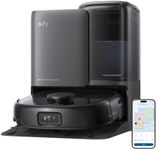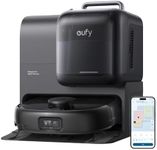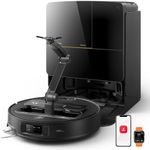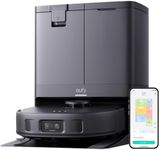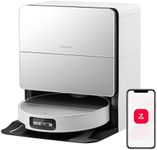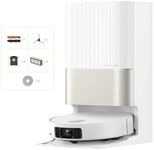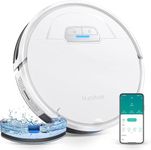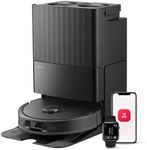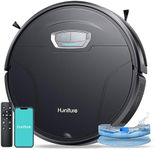Buying Guide for the Best Robot Vacuums And Mop
Choosing the right robot vacuum and mop can significantly enhance the cleanliness of your home with minimal effort on your part. These devices are designed to automate the cleaning process, saving you time and energy. To find the best fit for your needs, it's important to understand the key specifications and how they align with your specific requirements. Here are the main factors to consider when selecting a robot vacuum and mop.Suction PowerSuction power determines how effectively the robot vacuum can pick up dirt, dust, and debris from your floors. Higher suction power is particularly important if you have carpets or pets, as it ensures deeper cleaning. Suction power is usually measured in Pascals (Pa). For homes with hard floors and minimal dirt, a lower suction power (around 1000-1500 Pa) may suffice. For homes with carpets or pets, look for models with higher suction power (2000 Pa or more) to ensure thorough cleaning.
Battery LifeBattery life indicates how long the robot vacuum can operate on a single charge. This is crucial for larger homes, as a longer battery life means the robot can clean more area without needing to recharge. Battery life is typically measured in minutes. For smaller homes or apartments, a battery life of 60-90 minutes may be adequate. For larger homes, look for models with at least 120 minutes of battery life to ensure the robot can cover the entire area in one go.
Navigation TechnologyNavigation technology determines how well the robot vacuum can move around your home, avoid obstacles, and cover the entire floor area. Advanced models use technologies like LIDAR, cameras, or smart mapping to create a map of your home and plan efficient cleaning paths. Basic models may use random navigation, which can be less efficient. If you have a complex floor plan or many obstacles, opt for a model with advanced navigation technology to ensure thorough and efficient cleaning.
Mopping FunctionalityMopping functionality allows the robot to not only vacuum but also mop your floors, providing a more comprehensive cleaning solution. Some models have a separate water tank and mop attachment, while others may have integrated systems. Consider the size of the water tank and the type of mopping pad used. If you have a lot of hard flooring, a model with a larger water tank and reusable mopping pads may be more convenient. For occasional mopping, a smaller tank may be sufficient.
Dustbin CapacityDustbin capacity refers to the amount of dirt and debris the robot vacuum can hold before it needs to be emptied. A larger dustbin means less frequent emptying, which is convenient for busy households. Dustbin capacity is usually measured in liters. For homes with pets or high traffic, a larger dustbin (0.6 liters or more) is recommended. For smaller homes or less frequent cleaning, a smaller dustbin may be adequate.
Smart FeaturesSmart features include app control, voice assistant compatibility, and scheduling capabilities. These features enhance the convenience and customization of your cleaning routine. App control allows you to start, stop, and schedule cleaning sessions from your smartphone. Voice assistant compatibility lets you control the robot with voice commands. Scheduling capabilities enable you to set specific times for the robot to clean. If you value convenience and tech integration, look for models with robust smart features.
Noise LevelNoise level indicates how loud the robot vacuum is during operation. This is important if you plan to run the vacuum while you are at home or during nighttime. Noise level is measured in decibels (dB). Quieter models typically operate at around 55-65 dB, which is about the noise level of a normal conversation. If noise is a concern, look for models with lower decibel ratings to ensure a quieter cleaning experience.
